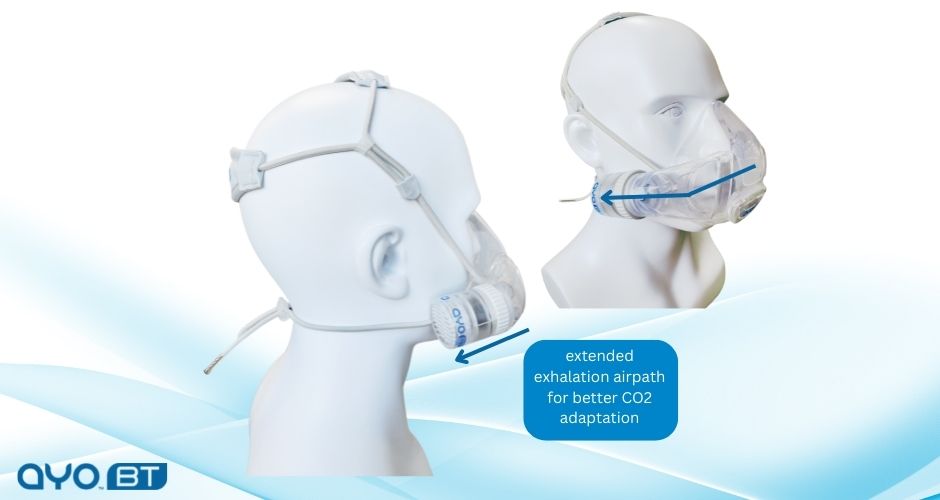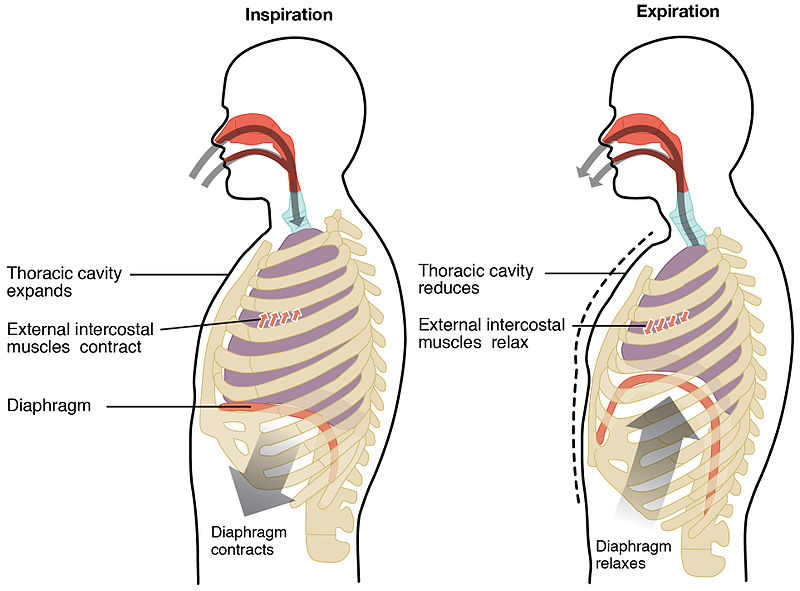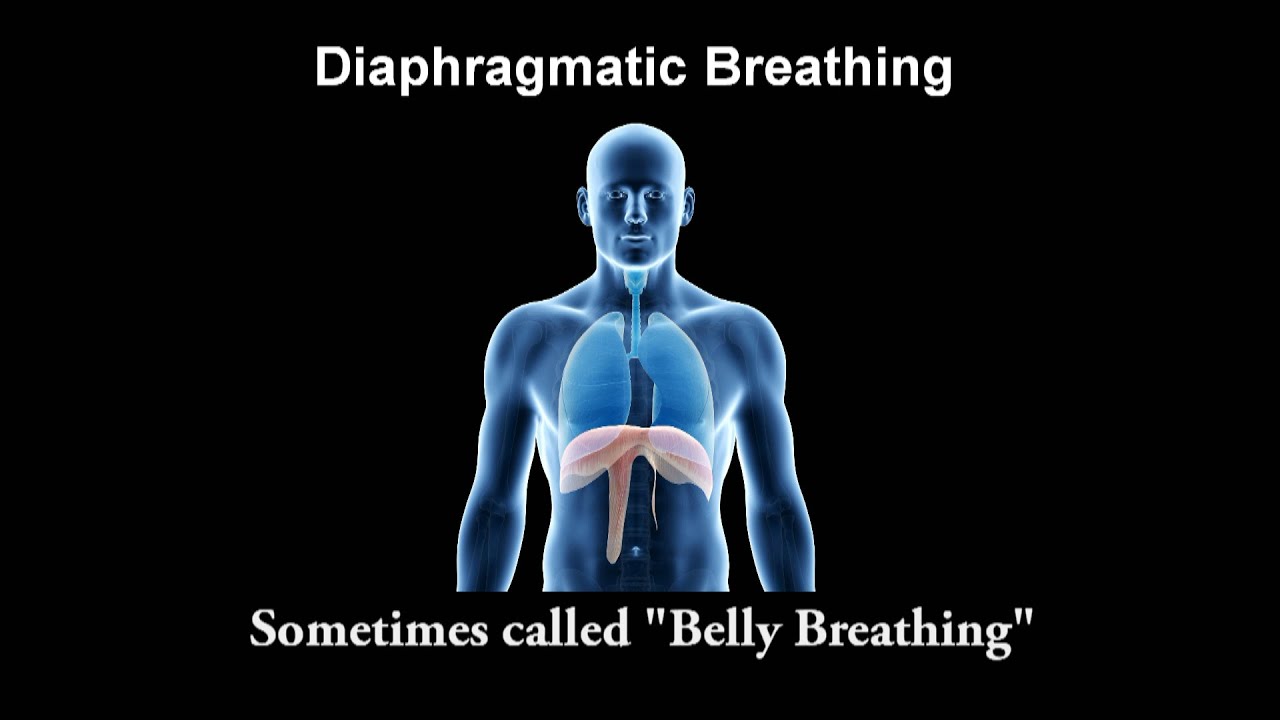AYO BT+ Uses Cases for Elite Athletes
About AYO BT+
AYO BT+ is the world’s first modular measurement respirator for breathing retraining. It fills a significant gap that, before its release, no such device could provide breathing data while people were performing sports and fitness training.
The possible applications with AYO BT+ are extensive, and in this document, we focus on its use cases for elite athletes.
Train for Diaphragmatic Breathing
Diaphragmatic breathing via the nose is widely recognised as the most efficient, surpassing other techniques like chest breathing through the mouth. However, many elite athletes rely on chest breathing during their sports activities, unknowingly limiting their potential for superior performance, particularly in endurance-based sports that demand exceptional aerobic capabilities.

Enter AYO BT+: the ultimate tool for training diaphragmatic breathing and unlocking the true potential of elite athletes. This innovative device combines the AYO BT with measurement modules, offering a comprehensive solution for optimising breathing techniques.
The AYO BT+ utilises a unique mechanism to enhance diaphragmatic breathing. Controlling the air inlet and adding resistance effectively slows down and elongates the inhalation process, activating the diaphragm, the primary muscle responsible for efficient breathing.
Transitioning from chest to diaphragmatic breathing can be challenging, especially for athletes who have relied exclusively on chest breathing throughout their careers. However, with consistent use of AYO BT+ over time, athletes can train their bodies to naturally engage the diaphragm, laying a solid foundation for reaching new heights in their respective sports.
By incorporating AYO BT+ into their training routine, elite athletes can experience many benefits. Improved diaphragmatic breathing enhances oxygen intake, endurance, stamina, and overall aerobic capacity. This technique also promotes better relaxation, reducing muscle tension and facilitating quicker recovery between workouts or events.
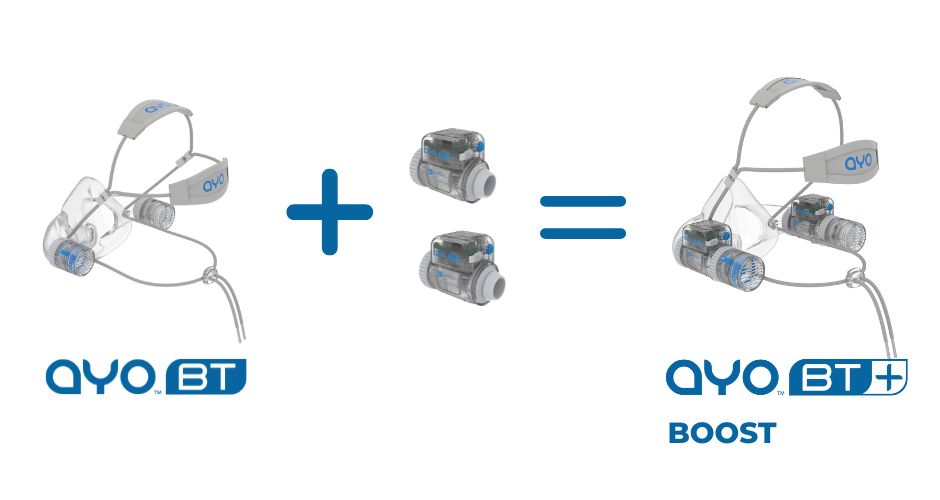
Measure the Loading to the Breathing Muscles
Most resistance-based training masks provide adjustable air inlet resistance to load the breathing muscles. However, the accurate resistance loading varies with the actual breathing effort. For example, even if a small inlet setting is selected, the resistance may only be high enough if the athlete puts on enough effort.
This is where AYO BT+ can come in, where it measures the Power of Breath cycle by cycle and the Work of Breath for the entire training session. The highly repeatable data provides more accurate loading metrics that a coach would prescribe than just a gut feeling that may vary and not be reliable.
Train for Breathing Efficiency
The flip side of Power of Breath and Work of Breath can be used to assess breathing efficiency. For example, for running the same distance with similar intensity, if the Power of Breath and Work of Breath is lower than before, it would indicate that breathing efficiency is improved.
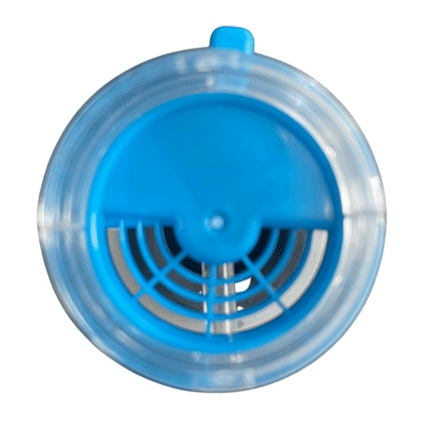
Gain More Insights into the Effectiveness of Training Programs
Apart from going to a sports test lab, the physiological data that can be conveniently and accurately measured is limited to heart rate only. This is surprising, given the advances in general technology in the past 50 years.
We know that, technically, the heart rate indicates how fast the heart is pumping blood.
The key reason to measure heart rate in sports training is to assess:
- The fitness level of an athlete
- The loading of the training to the athlete
- The recovery of the athlete
However, the blood is primarily used to transport oxygen to the body tissues and cells, where the oxygen reacts with carbohydrates and fats to produce the energy the body needs during cellular respiration. Yet, as part of the process, the oxygen needs to enter the bloodstream in the first place via gas exchange during breathing, and then before the oxygen reaches the tissues, it needs to be released from the red blood cells.
How the air is breathed in and out may affect the gas exchange and the release of oxygen from the blood to the tissues so that the oxygen may not diffuse from the lung into the blood efficiently. Once in the blood, it may not be efficiently used.
Understanding the oxygen delivery process to tissues and cells reveals that the heart’s role in pumping blood is just one step in the overall mechanism. It is crucial to recognise how oxygen enters the bloodstream and is released to the tissues to obtain a comprehensive understanding. Relying solely on heart rate for assessing athlete fitness or training program effectiveness is insufficient and may lead to inaccurate conclusions.
For instance, a higher-than-normal heart rate does not necessarily indicate intense training or low fitness levels. It could result from hyperventilation, which prevents oxygen from effectively reaching the tissues and cells, despite the increased heart rate.
The Bohr Effect, a scientific principle, influences efficient oxygen transportation in the blood. Hyperventilation leads to lower levels of carbon dioxide (CO2) in the blood, causing oxygen (O2) to remain bound to hemoglobin in the red blood cells when it should be released to the body tissues.
By utilising AYO BT+, athletes can gain valuable information about their breathing patterns and identify weaknesses in their oxygen delivery process. This data allows for a more comprehensive assessment of fitness levels and training effectiveness. By incorporating breathing analysis alongside heart rate monitoring, athletes can optimise their performance and make informed adjustments to their training routines.
Recognising the integral role of breathing in assessing fitness and training effectiveness unveils a more accurate and complete picture. AYO BT+ empowers athletes to unlock their potential by providing valuable breathing data, enabling targeted improvements in oxygen delivery and overall performance.
Embrace the science of breathing and maximise your training potential with AYO BT+. Discover the transformative impact of comprehensive fitness assessments and elevate your athletic performance to new heights.
See Training Result Before the Athlete Can Feel It
With multiple breathing data measured by AYO BT+, such as:
- Breath per minute
- Minute ventilation
- Tidal volume
- Vital lung capacity
- Power of breathing
- Work of breathing
The coach and athlete can see minor but continued improvements from a given training program that the result can’t be felt or sensed yet. This will encourage the athlete to stick to a potentially good training program and keep the program the same.

Create a Benchmark for Key Breathing Data Among Elite Athletes to Assist Sports Training
Measuring critical breathing data shown above among elite athletes with AYO BT+ for various sports, grouped by gender, age, height, and weight, will help many athletes to use these data as a benchmark to train towards.
Combination of Heart Rate with Respiratory Rate and Volume
Since the cardiovascular and respiratory systems combine to deliver O2 to and remove CO2 from all body tissues, adding breathing data such as respiratory rate and volume will add further dimensions and depth. This will complement the heart rate in assessing an athlete’s fitness level and performance. Doing so may revolutionise the way of sports training.
With AYO BT+, elite athletes gain the advantage of harnessing their breath as a powerful tool for performance enhancement. By embracing diaphragmatic breathing as the foundation of their training, athletes can unlock their full potential and propel themselves to new levels of success in their chosen sports.


